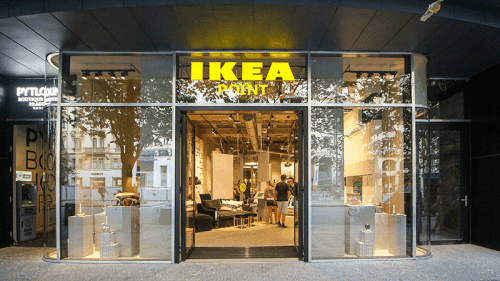Numerous long-range forecasts show that demographic changes and a shift in customer preferences will lead to increased demand for urban living. So is the market actually seeing this on the ground? The answer seems to be “yes.”
A number of prognosticators forecast substantial future demand for urban living in the coming years.
- As of the middle of this past decade, A.C. Nelson—now at the University of Utah—predicted demand for nearly 20 million attached housing units in the United States by 2025.
- Consumer research conducted by Bethesda, Maryland–based Robert Charles Lesser & Co. indicates that 77 percent of generation Y plans to live in an urban core. Furthermore, due to a variety of demographic factors, there exists a 12 million–unit undersupply of attached housing.
- The U.S. Environmental Protection Agency indicates that an increasing percentage of housing permits in many metropolitan areas is occurring in the urban core.
- Chris Leinberger believes that walkable urban areas will see the most demand in coming years.
- The National Multi Housing Council says that 66 percent of new households created between 2008 and 2015 will be renters, and 86 percent of new households formed between 2000 and 2040 will not have children.
- Furthermore, A.C. Nelson now estimates that the rental housing market will add 9 million to 12 million units by 2020, and that rental housing will make up 41 percent of the nation’s housing by then.
- The National Association of Realtors believes there is unmet demand for urban living.
All of this research and these various prognostications point to a major boost for the apartment market in the coming years; indeed, this boost is materializing already. Developers, brokers, and investors around the country are finding that conditions on the ground in metro areas across the nation are responding to these changing demographics—an early indication of future hot market sectors.
Although the for-sale townhome and condominium market continues to lag (along with single-family houses) in most areas of the country, the apartment market is coming around. Marcus & Millichap, a national apartment research and advisory firm based in Phoenix, Arizona, sees a positive outlook in its 2011 National Apartment Report.
Hessam Nadji, senior vice president, managing director, Research and Advisory Services, Marcus & Millichap, believes the current surge in apartment demand has more to do with some temporary factors than with the usual driver, which is employment growth. “Release of pent-up demand from young adults who moved in with family and doubled up during the recession, reversal of homeownership, and lower tenant turnover at apartment complexes are the main temporary factors,” explains Nadji. “As these factors level off or fade in the next year or so, job growth should pick up, so the overall improvement in demand should remain strong.”
Marcus & Millichap indicates that nationwide vacancy is projected to fall in 2011 to 5.8 percent, a decline of 1.1 percent. A lack of new supply and the improved hiring in the economy will also lead to a 4.5 percent increase in effective rents to a projected average of $1,002 per month.
“Longer term, the sheer number of young adults will be a major driver of demand,” explains Nadji. “Between 2010 and 2020, the total number of 20- to 34-year-olds in the U.S. will increase by 5 million. This comes at a time when new supply is becoming more difficult to add. With the exception of some high-construction metros, supply is likely to fall short of demand for at least the next five years.”
Market preference is dictating the location of apartment development as well, and renters of all ages tend to want to be in walkable, connected locations. Markets such as Chicago, Seattle, San Francisco, and Minneapolis are experiencing most demand for apartments in core city locations. Denver has seen demand near light-rail stations. In Minneapolis, the Cassidy Turley 2011 Annual Market Report indicates that most demand for new housing is in the two core areas of Minneapolis and St. Paul, with fully 73 percent of all proposed apartment units to be located there.
Says William MacDonald, executive managing director, East Region, Mill Creek Residential Trust, and assistant chair of ULI’s Multifamily Council (Gold Flight), “I think that demand for urban living and transit-oriented locations is strong.” He notes that New York City, Boston, and Washington, D.C., all have recent examples of this. “Renters with no children at home tend to want to be close to their place of employment and retail, restaurants, and bars.”
Mary Ann King, president of Moran and Company, based in the firm’s Irvine, California, office and chair of the Institute’s Multifamily Council (Blue Flight), cites that companies that conduct employee preference surveys are increasingly finding a desire for urban living, to the point that companies are choosing urban locations for their offices. Students also favor city life, and are choosing colleges and universities in urban locations “where the action is.” She notes that there is less need for internal amenities like a pool, because the amenities that people increasingly want are found in the city. Whether urban or suburban, apartments near a walkable urban environment perform better. “The perfect location [lies within] walking distance [of] Starbucks, Whole Foods, and Barnes & Noble,” she says. Choosing urban living is about more than just the cost to commute, it is the environment. King notes that it isn’t just renters choosing urban and walkable locations—investors are doing so as well.
So it seems that those with an ear to the ground are confirming that the market is increasingly expressing a preference for urban, walkable locations. The fact that investors are picking up on this is evidence of a long-term trend. What remains to be seen, however, is whether supply can keep up.




